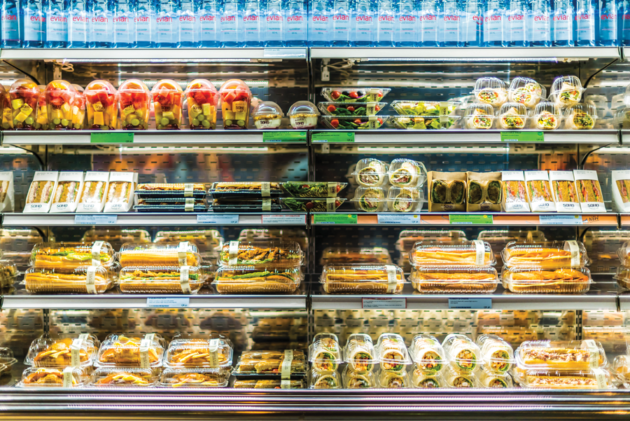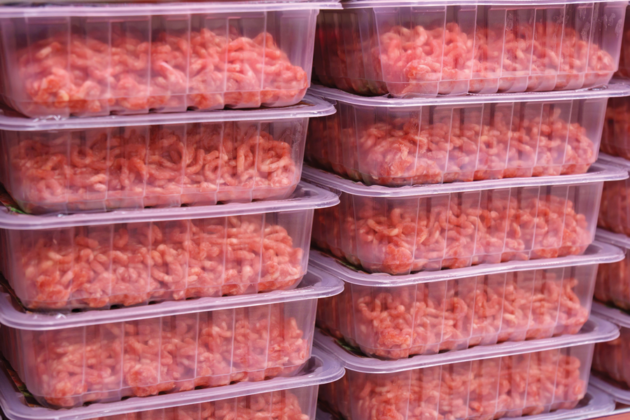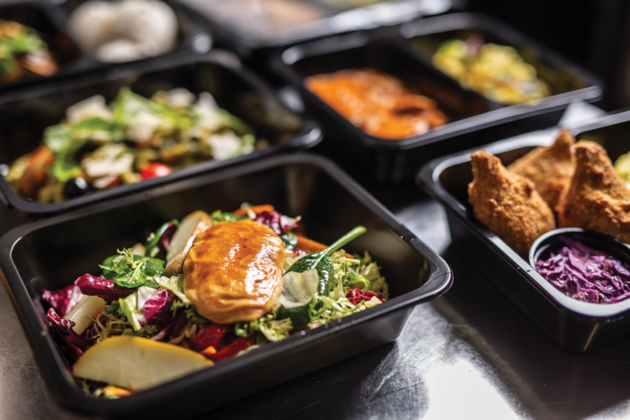
Balancing food safety and sustainability
By Karen Barr
Packaging Sustainability Canada Plastic Pact Editor pick food and beverage canada Golden Design Rules Omnia Packaging plastic packaging Value Chain Management InternationalA deep dive into the challenges and opportunities in redefining packaging for a sustainable future
 Plastic food packaging waste is preventable, but there’s no consensus on the way forward. Photo © monticellllo / Adobe Stock
Plastic food packaging waste is preventable, but there’s no consensus on the way forward. Photo © monticellllo / Adobe Stock Plastic has been critical in moving food safely across the supply chain from manufacturing to handling, transportation, storage, grocery shelves, and consumers. It increases product shelf life, prevents food from spoilage and waste, and reduces the spread of food-related diseases.
According to the Government of Canada’s website, Canadians throw away over 3 million tonnes of plastic waste every year, while only nine per cent is recycled. How can manufacturers balance food safety concerns with the government mandate for phasing out plastic food packaging?
In a statement, Food and Beverage Canada (FBC) said, “While we align with the government’s objectives in plastic waste reduction, we have reservations about the potential unintended consequences stemming from the current approach.”
“We all agree that we should be cutting back on the use of plastics,” says Kristina Farrell, CEO, FBC. “There are plastic alternatives for some packaged goods and not others. There are no alternatives for plastic film to safely package meats. The current plastic packaging, which includes transparent multilayer packaging, enables consumers to inspect products for things such as quality and cut. The material itself has low gas permeability, which promotes extended shelf life. Right now there is no viable alternative to this packaging material. Additionally, the blood and tissue often remaining on the packaging after its disposal would still make it unrecyclable, regardless of whether the material itself was more environmentally friendly.”
“There are multiple ways to address plastic packaging without eradicating it completely. We need to take a systemized approach,” says Martin Gooch, CEO of Value Chain Management International. “We’ve taken decades to be right where we are, and it’s been allowed to evolve. Things have changed since the 1950s and 60s when produce was sold loose. It was available only seasonally. You only could buy strawberries in summer. Salads didn’t come in a convenience bag. Families shopped more than once a week, so shelf life was less of an issue. Today, there are no standardized specifications when it comes to plastic packaging. It’s the system that needs to be changed.”

At this point, there are no alternatives for plastic film to safely package meat. Photo © Алексей Филатов / Adobe Stock
Possible solutions
Plastic has been considered a low-value product, and to create perceived value, more complexity has been added to plastic packaging than necessary. This has had repercussions. Gooch gives an example by saying, “PET [polyethylene terephthalate] is a recyclable plastic. Let’s say you produce a PET water bottle. Once a PVC [polyvinylidene chloride] cap is placed on top, it limits its recyclability.”
One solution Gooch points to is the standardization of plastic polymers. “This could mean using fewer polymers or making multi-layer laminates out of the same polymers. Up to this point, there has been no incentive for this to be done. I am fully in support of reducing plastics; it just has to be achieved in a well-thought-out way.”
The Canada Plastics Pact (CPP) is tackling plastic pollution with plastic-related solutions. “There isn’t one solution but a portfolio of solutions. Packaging for food is a challenge. It requires technical solutions that maintain product integrity, shelf life, and product food safety. Brands use packaging to communicate their consumer proposition,” says Cher Mereweather, managing director, CPP. “One really important element is what happens to the plastic after we are done with it. Today, we are focused on the big challenges that companies cannot achieve on their own.”

The Golden Design Rules were created to facilitate less plastic packaging, while using more easier-to-recycle plastic for packaging. Photo © weyo / Adobe Stock
Mereweather points to the Golden Design Rules. These rules for plastic packaging were developed by Consumer Goods Forum’s Coalition for Action on Plastic Waste, for which Galen Weston is the co-chair, along with Alexis Perakis-Valat, president, Consumer Products Division, L’Oreal.
The nine Golden Design Rules were established to facilitate less plastic packaging, while also using more plastic packaging that is easier to recycle by 2025. This includes increasing the value of PET recycling; PET thermoformed trays and other PET thermoformed, as well as flexible consumer packaging, such as the packaging for frozen produce, and rigid HDPE (high-density polyethylene) and PP (polypropylene) used for products such as laundry soap and dairy tubs.
Another rule involves the removal of problematic elements such as PVC or PVDC (polyvinylidene dichloride), which can disrupt recycling in some types of packaging. The plastic film used in vegetables and meat trays are usually manufactured from PVC or PVDC. Other elements under this umbrella include undetectable carbon black, EPS (expanded polystyrene), PS (polystyrene), PETG (polyethylene terephthalate glycol), and oxo-degradable plastics.
Reducing plastic waste involves rules governing the elimination of excess packaging headspace, with a stipulation of a 30 per cent maximum guideline, the reduction of overwraps, and reduced virgin plastic use in B2B plastic packaging. Finally, to guide consumers, there is a packaging rule to include recycling or reuse instructions on all consumer plastic packaging.
Omnia Packaging, the Canadian-based industrial plant owned by Italy’s Gruppo Sunino, operates two production divisions. One is for plastic, producing only 100 per cent recyclable packaging, and the other is for paper.
“We are different because our plastic food packaging is made with PP,” explains Monica Viazzo, who represents Omnia Packaging, in business development and marketing. “This is the purest polymer and the most recyclable one. We use 27 per cent less plastic in each tub we produce. This still guarantees the same shelf life for food. Additionally, we only use mould labelling using a monolayer of PP. This creates a clean, fully recyclable container.”
The research and development team at Omnia Packaging continues to develop moulds to support various packaging solutions that food and beverage manufacturers require, such as for ready-made meals, soups, sauces, dips, and cheese.
Solutions abound for keeping foods safe while reducing and recycling plastic. It will be interesting to see how food and beverage manufacturers as well as governments tackle the plastic problem.
This article was originally published in the February/March 2024 issue of Food in Canada.
Print this page